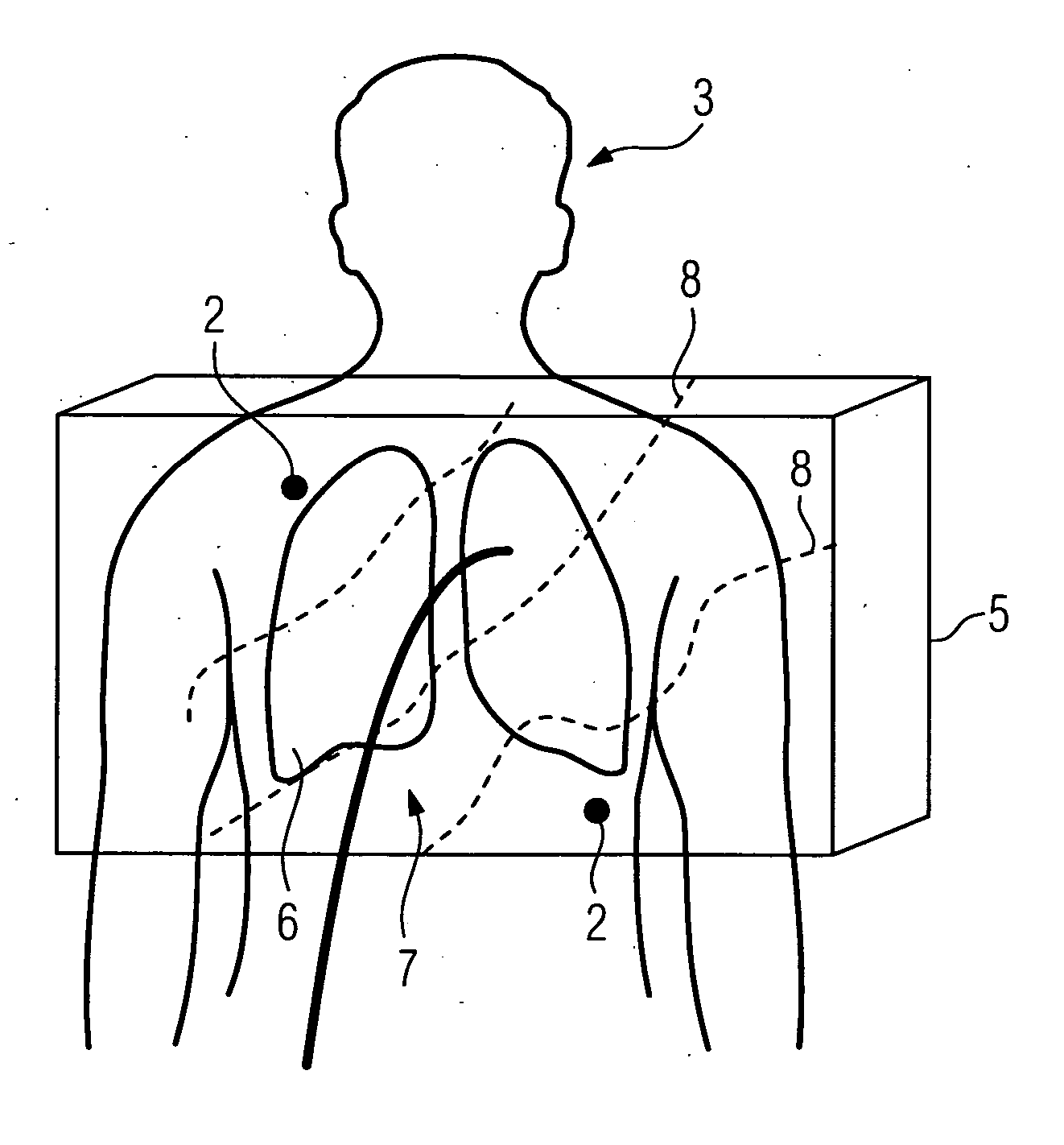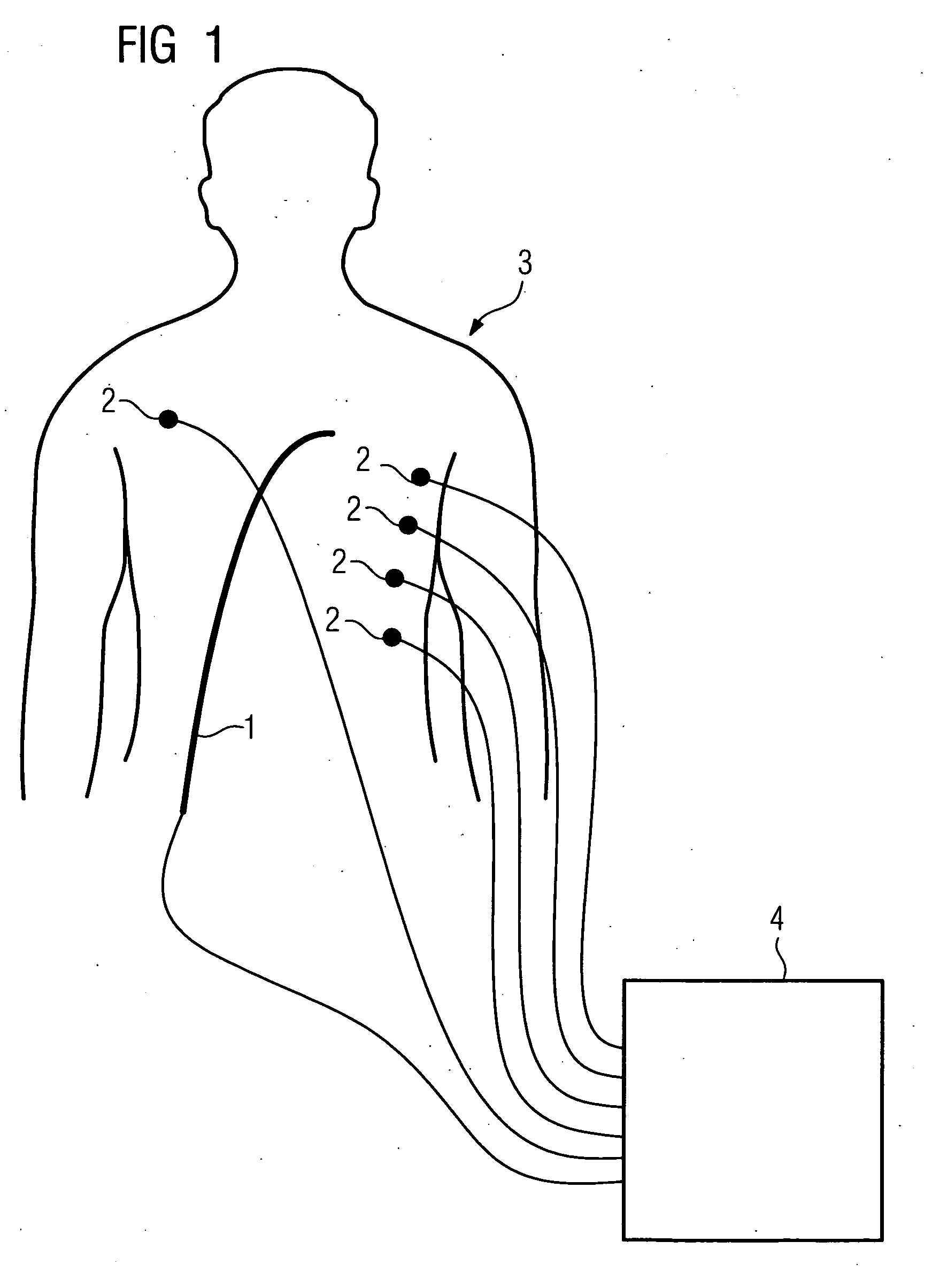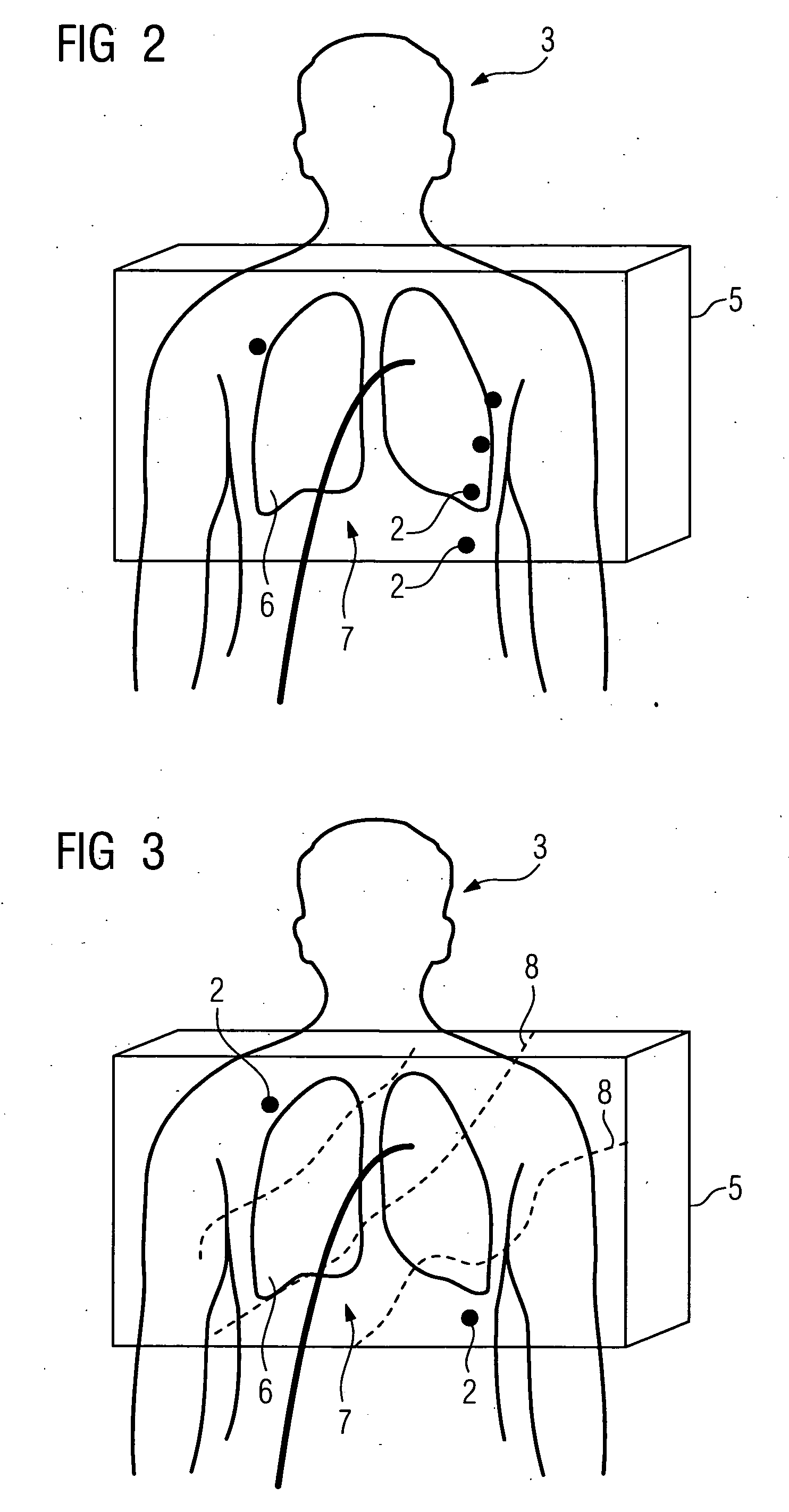Method for localizing a medical instrument introduced into the body of an examination object
a medical instrument and body technology, applied in the field of medical instruments localization, can solve the problems of high radiation dose, patient exposure to considerable x-ray dose, and inability to obtain three-dimensional information about the position, and achieve the effect of reducing costs
- Summary
- Abstract
- Description
- Claims
- Application Information
AI Technical Summary
Benefits of technology
Problems solved by technology
Method used
Image
Examples
Embodiment Construction
[0050]FIG. 1 shows a diagrammatic sketch of the arrangement of a catheter 1 and of electrodes 2 in a method according to the invention. The catheter 1 is introduced into the body of a patient 3 in order to be used there within the scope of an interventional procedure. Electrodes 2 are arranged on the patient 3, in this case five different skin electrodes. The electrodes 2 are arranged such that they do not all lie in one plane. The electrodes 2 and an electrode, not shown, of the catheter 1 are connected to a device 4 for generating and detecting signals, via which device voltages and / or currents can be applied and measured. In addition, by means of an imaging medical examination device, not shown here, for example for conducting a rotational angiography, three-dimensional image data of a region of interest of the body of the examination object is produced.
[0051]FIG. 2 shows a sketch of an image-recording volume 5 of the patient 3 comprising different tissue types. Besides the five...
PUM
 Login to View More
Login to View More Abstract
Description
Claims
Application Information
 Login to View More
Login to View More - R&D
- Intellectual Property
- Life Sciences
- Materials
- Tech Scout
- Unparalleled Data Quality
- Higher Quality Content
- 60% Fewer Hallucinations
Browse by: Latest US Patents, China's latest patents, Technical Efficacy Thesaurus, Application Domain, Technology Topic, Popular Technical Reports.
© 2025 PatSnap. All rights reserved.Legal|Privacy policy|Modern Slavery Act Transparency Statement|Sitemap|About US| Contact US: help@patsnap.com



